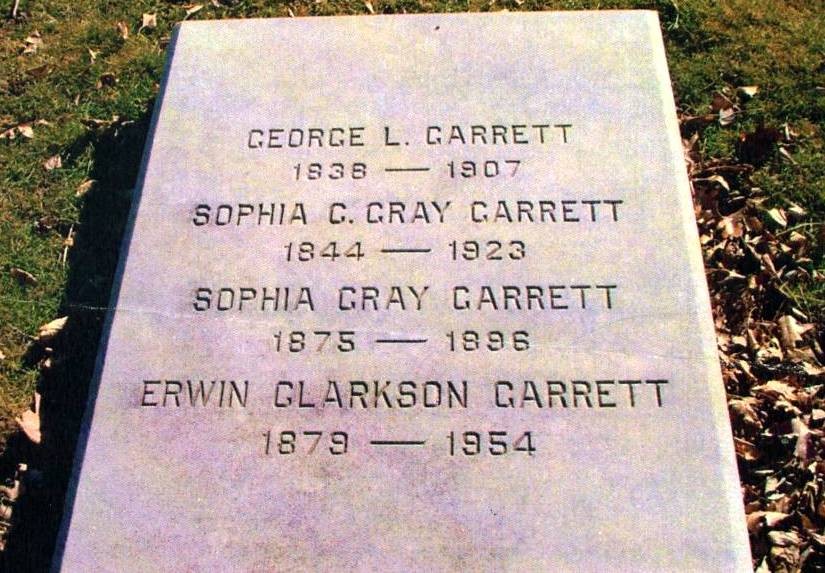
| The grave of Pvt. George L. Garrett of Company F (Three Months Volunteers), 23rd Pennsylvania, Birney's Zouaves. He was born in 1838 in Philadelphia. His Grandfather was Captain John Garrett, a Captain in Washington's Army. George mustered into service on April 21st 1861 at the arsenal in Philadelphia and served with the unit until July 31st 1861. He lived at 431 Stafford Street in Philadelphia PA, and died there on August 18th 1907. He is buried at Laurel Hill Cemetery in Section 2, Lot 120-122 Grave West.
Obituary: 30 August 1907:
George L. Garrett, of 431 West Stafford street, died at Galen Hall, Atlantic City, early on the morning of August 21, in the sixty-ninth year of his age. Mr. Garrett was a member of the well-known Garrett family of Mt. Airy, which came to America from Yorkshire, England, in 1683, with those who believed in the aspirations of William Penn in his Pennsylvania colony.
The Garretts shortly obtained a grant of land along the Brandywine which was signed by Letitia Penn, widow of William Penn. Being people of means, they erected three mills on their plantation, a flour, a paper and a snuff mill. The snuff mill, which eventually passed into the hands of William E. Garrett and Sons, George L. Garrett's uncle and cousins, was but recently disposed of by the latter to the tobacco trust. For the construction of the mills, for the bridges to span the Brandywine, and the runs to control water power for the mills, bricks were brought from England and from Wilmington, Del., then beginning Its existence.
Mr. Garrett was born at No. 618 South Washington square, Philadelphia, in an old-fashioned mansion built by his grandfather during the period when that section of the city was the select residential district.
Mr. Garrett in his younger days engaged in the coal commission business, and on the outbreak of the Civil War enlisted in the 23rd Pennsylvania, Three Months Regiment and the vAnderson Troupe, recruited near Girard and Twelfth streets, Philadelphia. Later he was transferred by his request to the fighting Fourth Missouri Cavalry and served with considerable distinction under Buell and Rosecrans. From the latter he received two letters commending his bravery in action.
He had, unfortunately, his horse shot from under him in a skirmish, pinning him down. He was captured and taken to Libby Prison, where because of his already impoverished condition (common at that time in the Federal forces on account of the lack of proper rations), and because of his right leg which had been pawed by his horse, it was considered unlikely he would live. He was a prisoner for nine months, finally being exchanged. He might have made his escape through the tunnel from "Rat Hell" but refused to leave his companion-in-arms, General Von Hemerich, formerly an officer in the Prussian Army, a man of too great physical bulk to make his escape by the tunnel and feeble through sickness.
Mr. Garrett served three and a half years, and it required some months for, him to recover from the effects of Libby Prison. At the close of the war he was honorably discharged as a brevet-captain, and was asked by the government to-re-enter the army as a major in a Western frontier regiment, but the illness of his father prevented acceptance of the proffered commission. Mr. Garrett was member of the Loyal Legion.
He is survived by his widow Sophia B. Gray, and two sons, Charles Hall and Erwin Clarkson Garrett.
Thanks to Leo at Laurel Hill for the Gravesite information and to Gene Stackhaouse for the help in locating the grave. For more info on George Garrett's Hitory see the News page under the date 3/12/2005.
|



